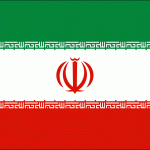Country Of The Month: Iran
Abortion is legal in Iran but highly restricted. ASAP Youth Champion Nikzad Zangeneh describes the abortion law in Iran, and its history in this post.
 Law related to Abortion:
Law related to Abortion:
Abortion can be done only during the first four months if the fetus is mentally or physically handicapped or if the mother’s life is in danger. Legal abortion services are provided only for married women but husband’s consent is NOT needed.
A Short History Of The Law:
Before 1973:
Before 1973, induced abortion was illegal in the Islamic Republic of Iran, except to save the life of the pregnant woman.
Under article 182 of the Penal Code, a woman who took or employed any kind of medication or substance resulting in an abortion except on the orders of a physician was subject to up to three years’ imprisonment. However, if the woman had done so on the orders of her husband, she was not to be punished, and her husband received the specified punishment.
Under article 183 of the Penal Code, a medical worker or person acting as such who performed an abortion was subject to three to 10 years’ forced labor unless it could be proved that the action had been taken to save the life of the mother. Persons adopting violent measures intentionally resulting in an abortion or causing an abortion by prescribing any type of medication or using any other means were also subject to imprisonment.
1976:
In 1976, the Penal Code was amended to permit a physician to perform an abortion if: (a) the couple was able to provide evidence of social or medico-social grounds for an abortion; (b) the abortion was performed during the first 12 weeks of pregnancy; (c) written permission of the parents was obtained; and (d) there was no danger to the health of the mother from the procedure. In the event that the abortion was requested on the grounds that the pregnant woman or her husband was insane, the law required written permission of the legal guardian of the insane partner. If the woman was unmarried, her own consent was sufficient. For a woman in the process of suing for a divorce, the consent of her husband was required if the fetus was legally considered to be his responsibility. In the case of an abortion performed for medical purposes, including cases in which the child would be born with an incurable disease, the physician had to obtain the endorsed opinion of two other qualified physicians. In such cases, the written consent of the woman alone was considered to be sufficient. The law also required that abortions be performed in a fully equipped hospital or clinic.
1979:
After the revolution in 1979, abortion was once again made illegal on most grounds.
1991:
Under the Penal Code of 1991, which is based on Islamic law, abortion is categorized as a lesser crime involving bodily injury (oisas), which is punishable by the payment of blood money or compensation (diyah). Compensation is paid to the victim or, in the case of the victim’s death, to the victim’s relatives.
2005:
The Iranian parliament has ratified some laws in recent years, including the Therapeutic Abortion Act on June 21, 2005. The new law in Iran permits termination of pregnancy during the first four months if the fetus is mentally or physically handicapped or if the mother’s life is in danger. According to the new law, the woman’s consent is sufficient to carry out the abortion. However, three specialists must confirm that the fetus is disabled or the mother has a life-threatening condition. A high proportion of the requests for abortion is made in the first trimester and the new law will facilitate the process when there are genetic disorders or serious maternal disease.
ASAP has a section called Country Profiles on our website where we discuss the laws in our member countries. Nikzad Zangeneh has helped update this section by adding a longer, and more detailed note about the Iranian Abortion Law and its implications for the reproductive health of women here on ASAP website.






